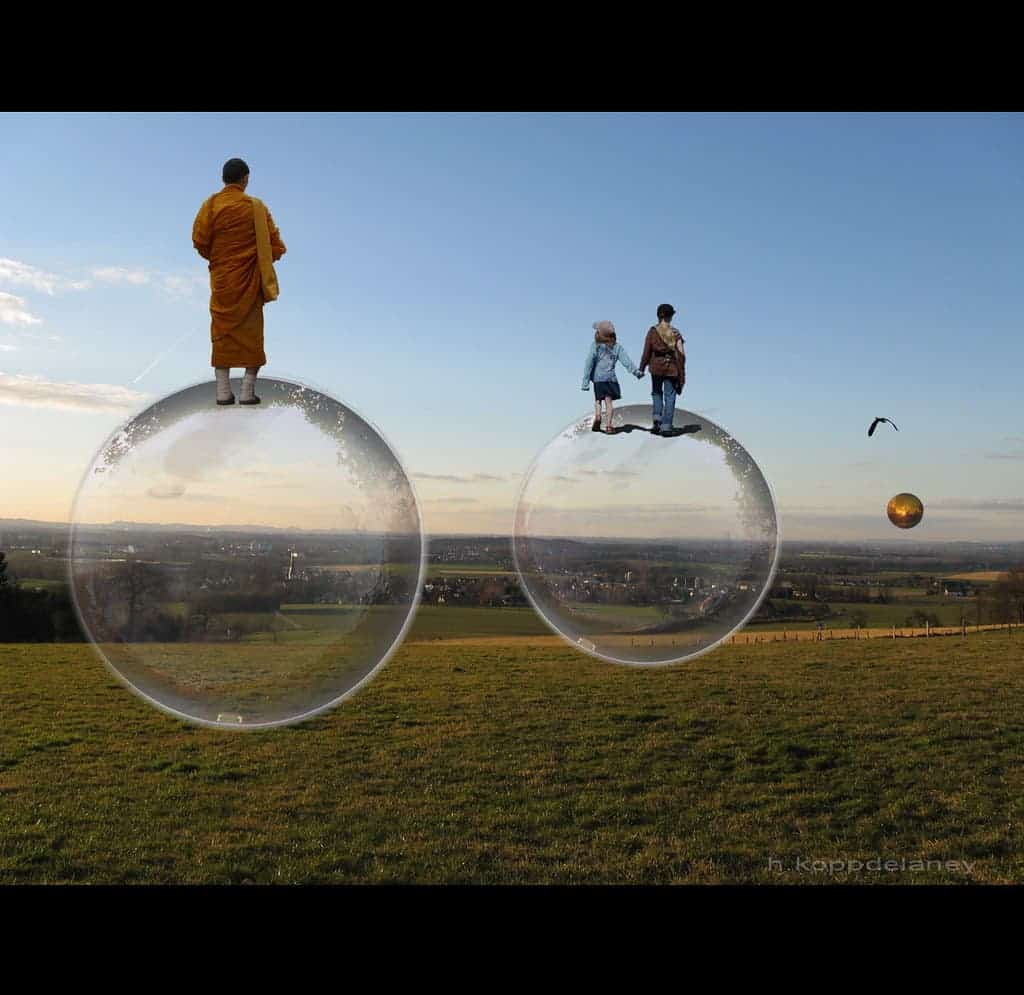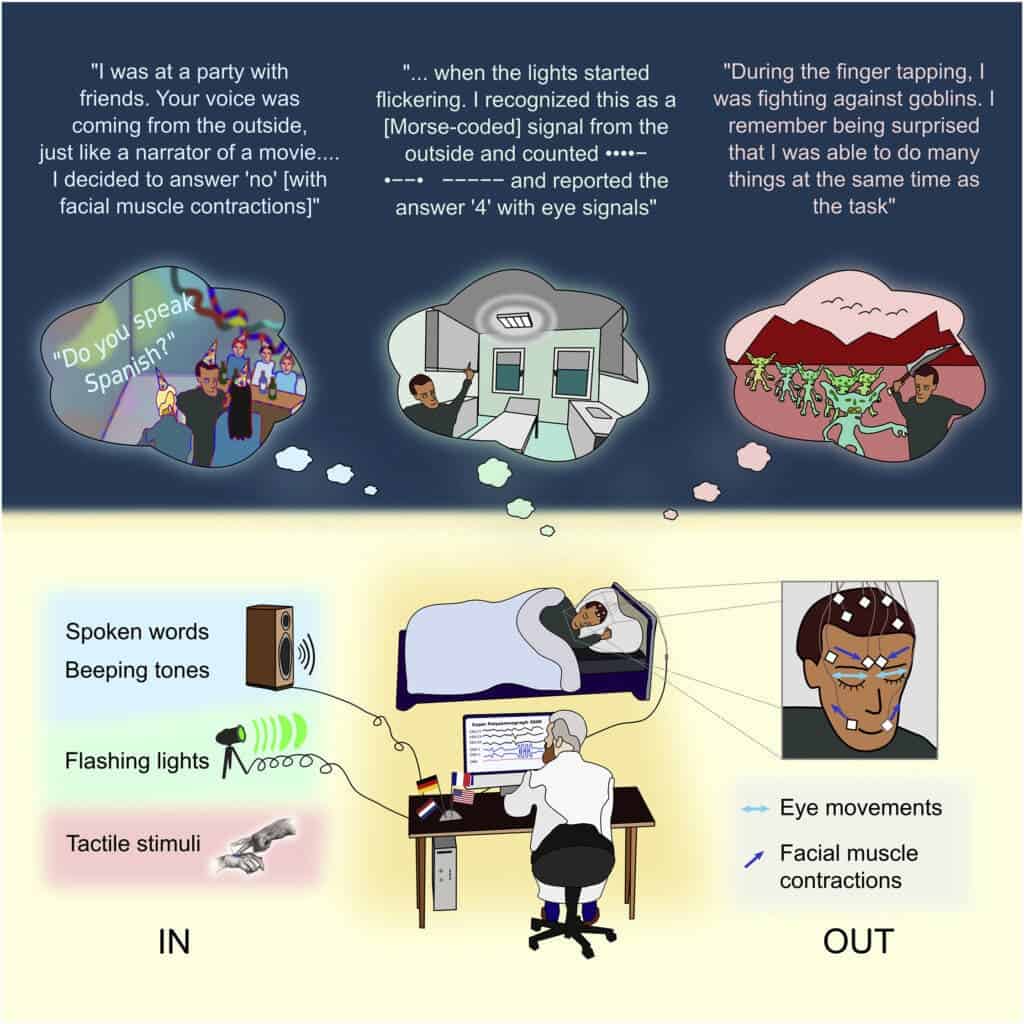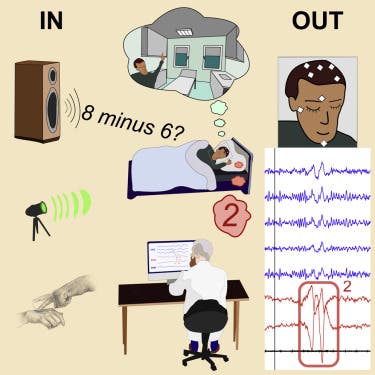
Lucid dreaming happens when you’re aware that you’re dreaming, as opposed to being completely immersed in the experience and totally decoupled from reality. Some lucid dreamers are so good at it they can consistently enter this state of awareness in their sleep and can even control their dream’s storyline to their liking. If you find all of this fascinating, you’re not alone — and scientists have now published a new study in which they’ve tapped into the brains of lucid dreamers while they had real-time dialogues.
Despite the ubiquity of dreams, scientists still know surprisingly very little about them. Most people have trouble remembering their dreams, which are subject to distortion, fragmentation, and forgetting, making neuroscience studies of dreaming highly challenging. In typical dreams, people judge their experience But this is where lucid dreamers come in.
In a new study, researchers led by Karen Konkoly, a neuroscientist at Northwestern University, attempted to communicate in real-time with 36 individuals who were in rapid-eye-movement (REM) sleep. The participants hailed from the United States, France, Germany, and the Netherlands, and were assessed by four independent laboratories.
“Why do we have dreams? How are dream scenarios created? Does dreaming confer any benefit for brain function? These and other questions have remained open, in part, because of the limited options available for peering into dream experiences,” wrote the researchers in the journal Current Biology.
“In typical dreams, people judge their experience with a high degree of acceptance and a lack of critical evaluation; they fail to realize that their experience is merely a dream. On the other hand, a “lucid dream” differs in that the dreamer gains the elusive insight of being in a dream.”
The participants’ experience with lucid dreaming varied — which was exactly what the researchers were looking for. Some had minimal experience with lucid dreaming, while others were frequent lucid dreamers. One patient with narcolepsy claimed he almost always had lucid dreams.

To verify that the participants were indeed dreaming, the researchers placed electrodes close to their eyes, as well as on the scalp and chin. This device records brainwave activity and eyeball movement, which are closely linked to deep sleep.
During this stage, people are likely dreaming. But how do you know they are also aware they’re dreaming? In order to identify which participants were lucid dreaming, the researchers asked certain questions that some participants answered with pre-arranged eyeball movements.

For instance, one participant was asked for the answer to eight minus six, to which he correctly answered “two” by making two eye movements from left to right. When asked to repeat the answer, the participant once again performed the correct eye movement.
After the participants woke up and the sessions were over, the researchers made a tally and found 18% of the trials involved clear and accurate communication as described above, 17% seemed to acknowledge they were being asked questions but made unintelligible answers, 3% gave wrong answers, and 60% had no reaction at all.
Interestingly enough, some of the lucid dreamers could remember their interactions with the researchers. Turns out their questions sounded like they came from a voiceover narrator in a movie or a radio host.
“Lucid dreamers were able to follow instructions to compute mathematical operations, answer yes-or-no questions, or discriminate stimuli in the visual, tactile, and auditory modalities. They were able to respond using volitional control of gaze direction or of different facial muscles,” the researcher wrote, confirming without a doubt that interactive-dreaming is a genuine phenomenon.
Besides validating lucid dreaming, the study highlighted various brainwave activities connected to dreaming. The study also showcased the disconnect between the sleeping and waking worlds, as many remembered completely different questions and answers after they woke up than what had happened in reality.
In the future, the researchers plan on probing two-way communication with lucid dreamers even further by optimizing the process. Some obvious questions they’d like to answer are how normal people can become lucid dreamers and how could the outside world communicate with lucid dreamers more reliably.
“We’ve long known that cognition and consciousness are not shut off during sleep, but our results now broaden the opportunities for empirically peering inside the sleeping mind. The advent of interactive dreaming—with new opportunities for gaining real-time information about dreaming, and for modifying the course of a dream—could usher in a new era of investigations into sleep and into the enigmatic cognitive dimensions of sleep,” the authors concluded.









